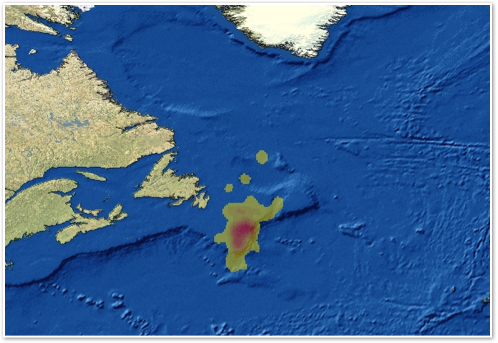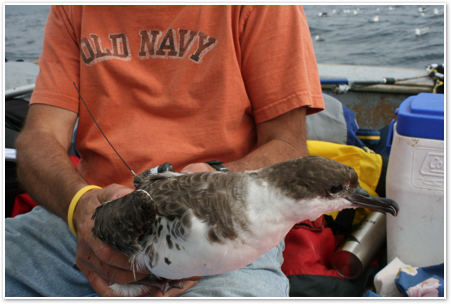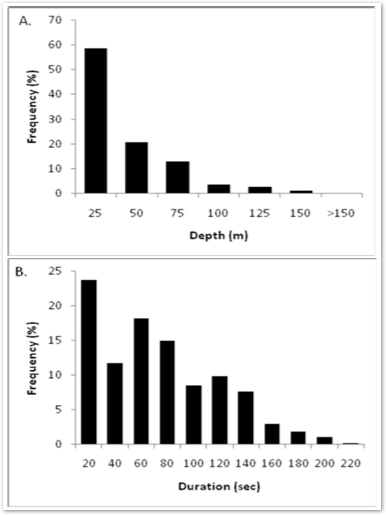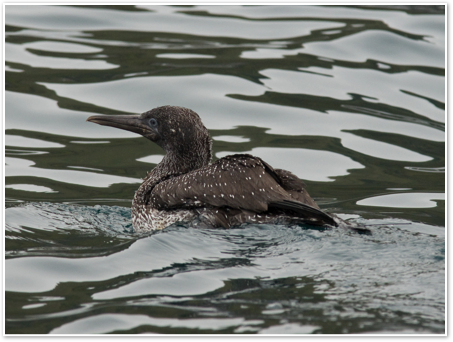Year-round Movement Ecology

Thick-billed (Minarets, Coats, Prince Leopold and Gannet Islands) and Common Murres (Funk and Gull Is; Fig 1) are being equipped with miniature bird-borne data loggers during breeding and non-breeding, 2007-09, to acquire novel information on foraging and migration tactics and habitat use throughout the year (Figs 3, 4, 5). Larger Northern Gannets are being equipped with GPS, compass and dive recorders during breeding and with geo-location devices during non-breeding periods, 2006-09.
As part of our IPY movement ecology research, we are attaching satellite tags to trans-equatorial migrant Greater Shearwaters that that spend summer and fall (austral winter and spring) on the Grand Bank and in coastal Newfoundland waters (Fig. 6). We are investigating their migration patterns and ocean habitat use. Shearwaters tagged in Placentia Bay in August moved immediately to the the shelf edges of the Banquero Bank (Nova Scotia) and Georges Bank (Massachusetts).

Fig 4. A diving profile from a breeding Common Murre, Gull Is, Newfoundland.

Fig 3. Common Murre from Funk Is carrying a geo-logger. Map showing winter distribution on SE Shoal of Grand Banks.

Fig 6. Greater Shearwater with satellite tag attached in Placentia Bay on 14 August 2008. (photo: R. Ronconi)

Fig 5. Frequency distributions of (a) diving depth (m) and (b) diving duration (s) for chick-rearing common murres in Newfoundland, july 2007 (from Hedd, et al, 2008)
We are also using Satellite tags to study the dispersal behaviour of fledging gannets and common murres (2009) from their breeding colonies. In early September, we attached satellite tags to 6 free-swimming gannet fledglings in the vicinity of Cape St. Mary’s (Fig. 7). Within a week, the young birds were flying and moving south along the continental shelf of eastern North America.

Fig 7. Recently fledged Northern Gannet at Cape St. Mary’s with a satellite tag attached to its tail, antenna can be seen just above the water (photo: G. Herzberg)
Recent Publications
Elliott, K. H., Shoshanah, R.J., Ringrose, J., Gaston, A.J. & Davoren, G.K. (2008). Is mass loss in Brunnich’s guillemots Uria Iomvia an adaptation for improved flight performance or improved dive performance? Journal of Avian Biology, 39, 619-628. PDF